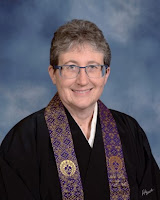Spring Equinox: Finding Harmony Between Light and Dark
In March we celebrate the Spring Ohigan. Ohigan is a Japanese Buddhist holiday that marks the equinoxes. The equinox days--one in spring and one in fall--are the times when the days and nights are of equal length. At the equinox the sun rises directly in the east and sets directly in the west almost exactly 12 hours later. It is a time of balance, of harmony, when it is not too hot or too cold, not too bright or too dark. It is a time of fertility and growth in the spring and of abundance and harvest in the fall.
As we enter the 3rd year with COVID and we watch the unfolding of the war in Ukraine, it is a good time to reflect on the relationship of darkness and light, of bad and good, of grief and joy, of ignorance and Enlightenment in our human lives. Master Shinran, the founder of our Jodo Shinshu Buddhist tradition, describes this relationship between light and dark this way:
The light of compassion that grasps us illumines and protects us always;
The darkness of our ignorance is already broken through;
Still the clouds and mists of greed
and desire, anger and hatred,
Cover as always the sky of true and
real understanding.
But though the light of the sun is
veiled by clouds and mists,
Beneath the clouds and mists there is brightness, not dark.
(--excerpt from the Shoshinge by Shinran Shonin)
Shinran points out that darkness and light exist together in our lives. And in Buddhism, we are NOT asked to pick EITHER the light OR the dark. The darkness and the light do not contradict each other; they exist together. If we had not experienced darkness, then we would not know what light is. If we had not been through the cold of winter, we would not appreciate the warmth the spring sunshine. If we had not seen the dead grass covered in snow, we would not appreciate the bulbs sprouting and blooming in our yards, poking their green shoots up between the brown leaves. Their existences depend on each other.
Image: Quilt square created by ladies of the Idaho-Oregon Buddhist Temple Buddhist Women's Association
Happy Spring!
In Gassho (with palms together)
Rev. Anne Spencer
Assistant Minister, Idaho-Oregon Buddhist Temple







Comments
Post a Comment